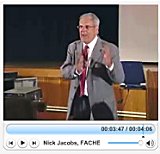The Association of American Medical Colleges (AAMC) projects that a physician shortage could reach a high of 124,000 by 2024. The strain this will cause will not be borne equally.
“The COVID 19 pandemic has highlighted many of the deepest disparities in health and access to health care services,” said AAMC President and CEO David Skorton, “and exposed vulnerabilities in the health care system.”
Gerald E. Harmon, president of the American Medical Association, also raised alarms about the future of U.S. health care.
“Because it can take up to a decade to properly educate and train a physician,” Harmon said, “we need to take action now to ensure we have enough physicians to meet the needs of tomorrow.”
He added, “The health of our nation depends on it.”
This bleak scenario recently was presented to Indiana Regional Medical Center, Indiana University of Pennsylvania (IUP), and Indiana County leadership. As a local response, it was suggested that IUP, as one of the larger state universities in Pennsylvania, should take a lead role in creating a rural family practice medical school. Such an initiative would be a game-changer for not only the university but also for the entire Commonwealth.
Over the past ten years, universities throughout the United States have seen declines in student enrollment. These decreases have led to painful programming cuts as well as other downsizing initiatives. Still, most of the exceptionally strong programs still thriving at IUP are heavily directed toward STEM (Science Technology, Engineering, and Math). These programs have had continued robust enrollment numbers in healthcare and science-oriented degrees.
In December, IUP President Dr Michael Driscoll confirmed that the IUP Board of Trustees has approved exploration of this medical school initiative. The caveat? Funding will be a major factor in determining a “go or no go” decision.
The financial challenge may be exacerbated by Duquesne University’s decision to build a College of Oseopathic Medicine, which has garnered support from some Pittsburgh-based granting organizations. This might limit those organizations’ enthusiasm or capacity for an IUP medical school. That would be unfortunate because, although Duquesne University’s medical school is a positive addition to the area, the reality is that urban-trained physicians tend to remain in urban areas, and city training and resources are not always ideally suited for a rural setting.
Therefore, the most critical major potential source of support for this project is the Pennsylvania State System of Higher Education (PASSHE). Working with state legislators, PASSHE could muster resources that would help create a Western Pennsylvania Medical School based at IUP.
Moreover, each year entry-level seats could be held for students from each of the 14 state universities that come under the PASSHE umbrella: West Chester, Slippery Rock, Shippensburg, Millersville, Mansfield, Lock Haven, Kutztown, Edinboro, East Stroudsburg, Clarion, Cheyney, California, Bloomsburg, and IUP
Numerous potential critical players in this scenario. Including private and community foundations, have not yet fully realized the extent to which a school like this would improve our region. The primary question they should ask is “How do we fill the dozens of physician openings we already have in this area?”
Without a plan to address this challenge, the number of openings will only grow.
Another regional asset that could provide significant depth and impact to this medical school is the Chan Soon-Shiong Institute for Molecular Medicine. CSSI currently houses not only 500,000 donated tissues samples for research, but also has on staff talented PhDs in genomics, informatics, and tissue banking who could contribute extensively to the educational research needed to support a medical school.
Finally, consider the cost we all bear when hiring physicians locally. Because the competition is intense, we must employ recruiters. Other expenses including advertising for the position; fees to locum tenens (substitute docs) during the hiring process; candidate interview costs; time spent on interviewing, onboarding and credentialing the doctor; candidate relocation costs; primary care physician salary and benefits, and incidentals. This list, according to the UNC Solutions blog, totals about $341,000.
Being able to locally source and train physicians from 30-plus graduates a year over a ten-year period would pay for itself three-fold.
We desperately need physicians in our region. We need this medical school. We need to support IUP in this initiative to help give students from Pennsylvania an opportunity to go to medical school in our region because that will ultimately benefit everyone in our region.




